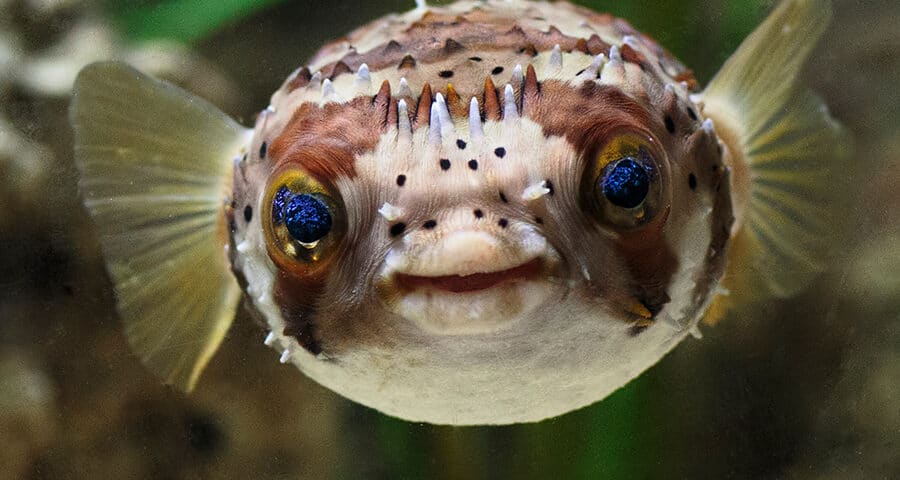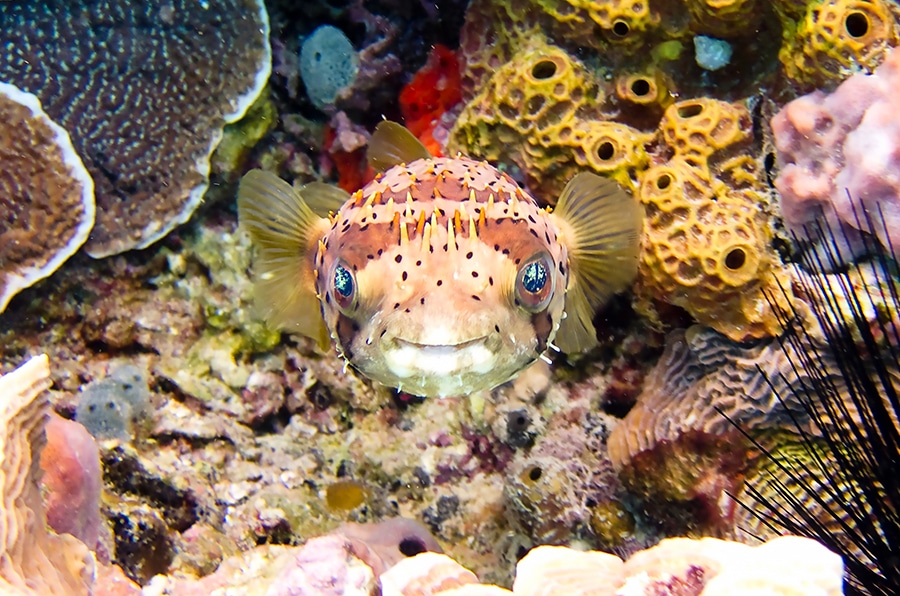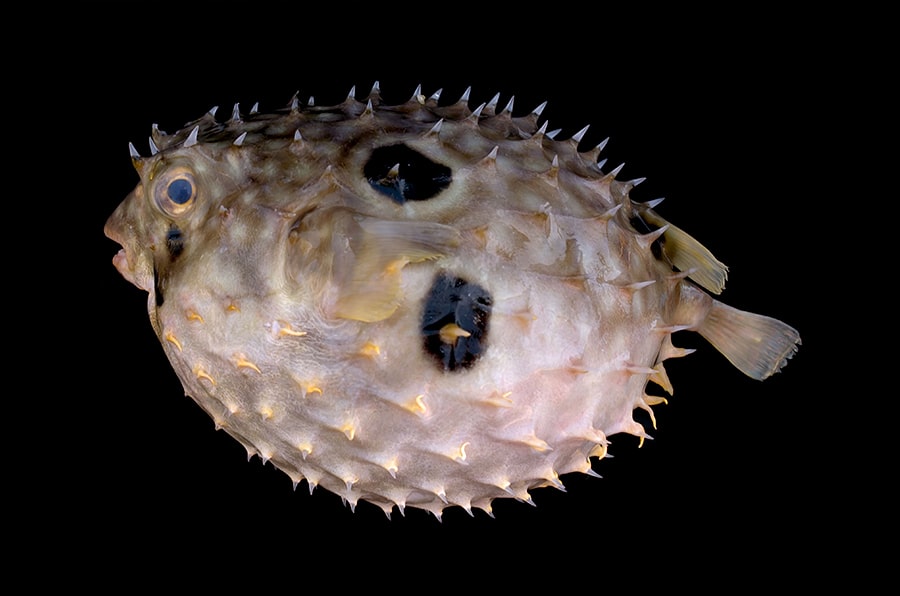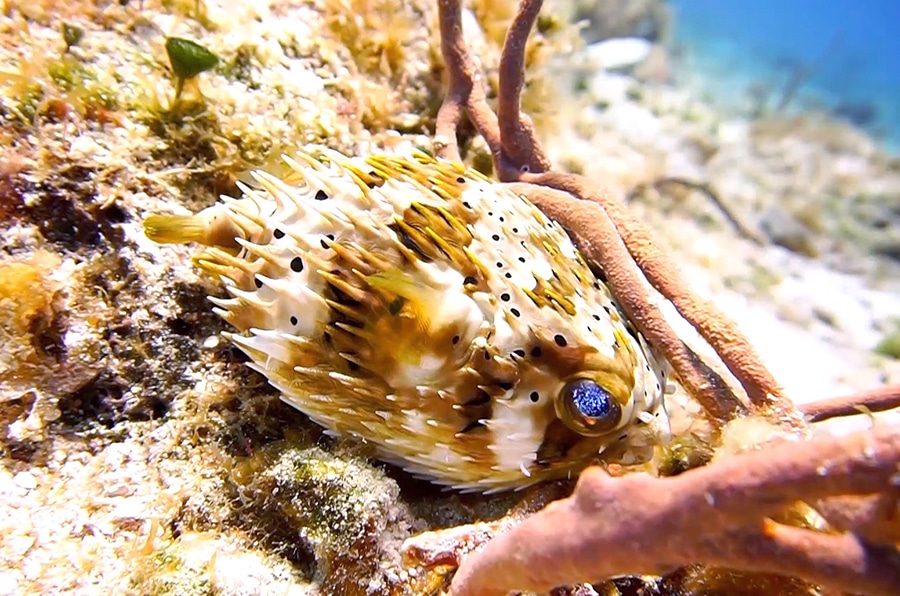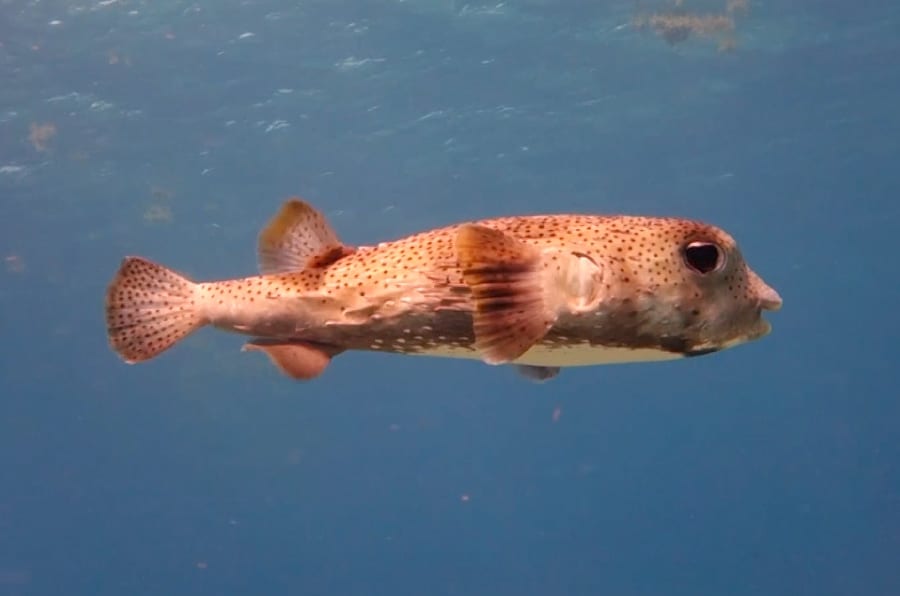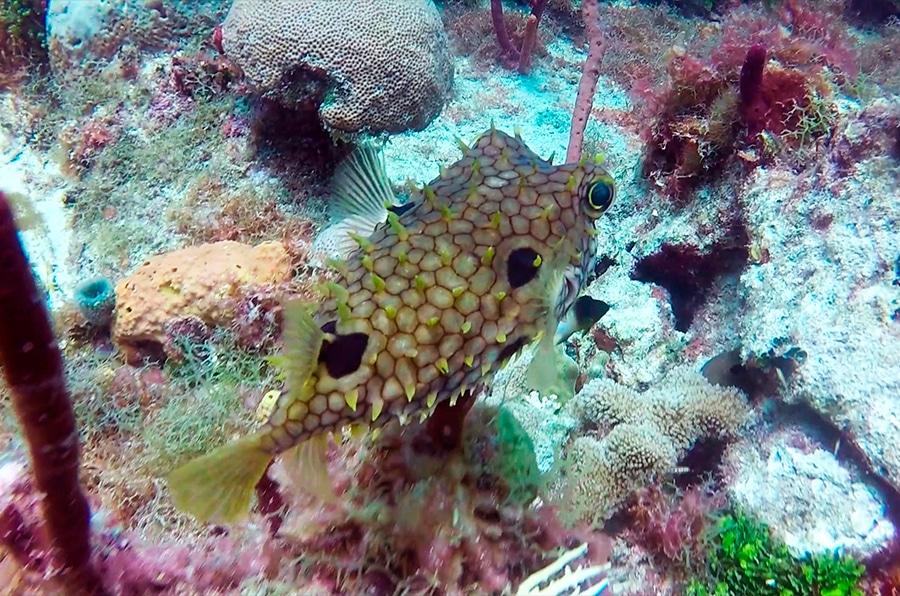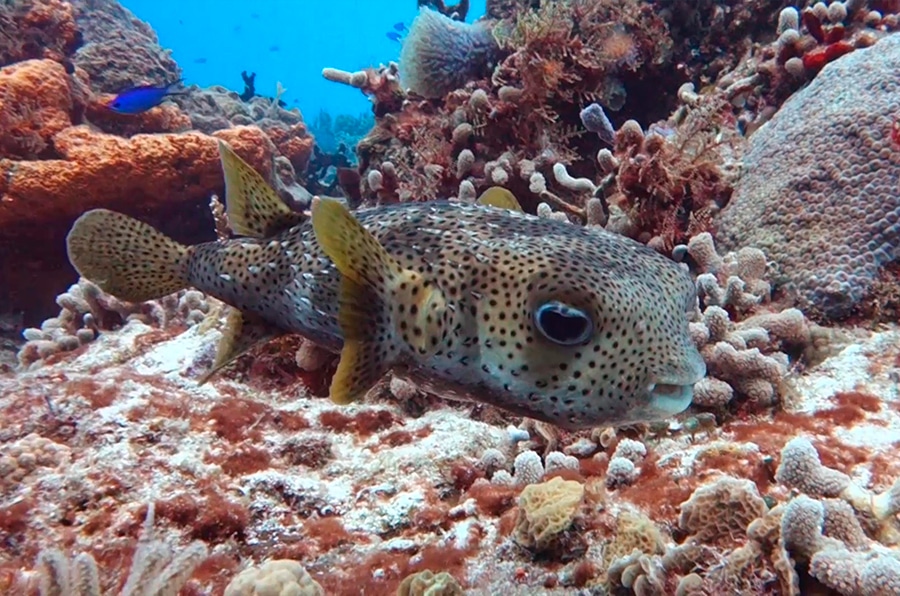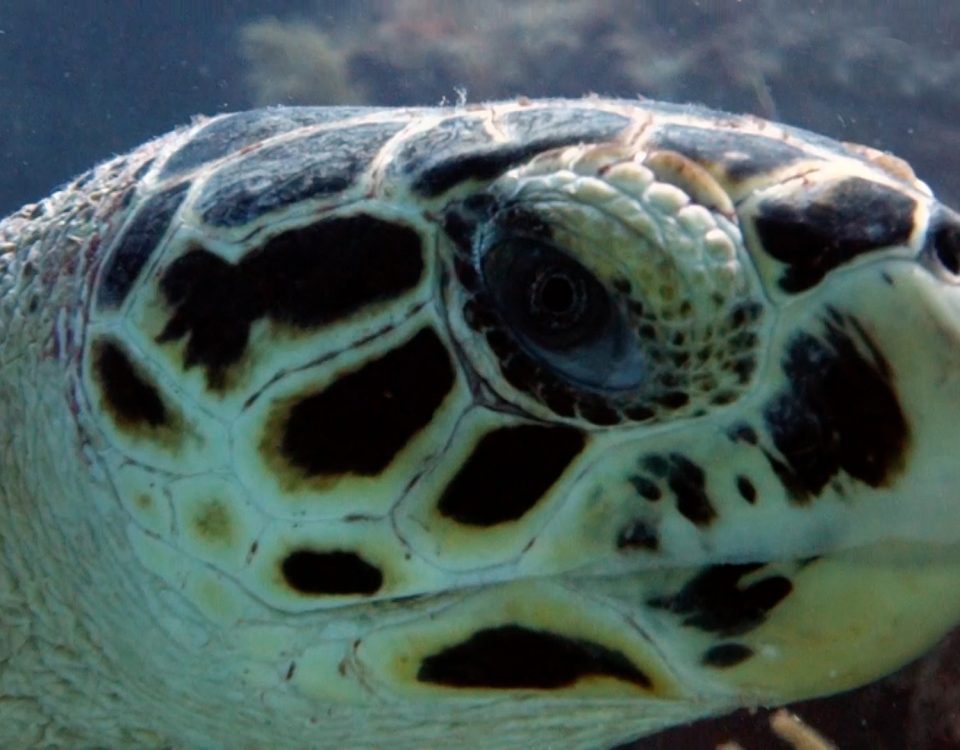1. Puffer Fish Vs Blowfish
Pufferfish have the unique ability to suck in water and air to greatly inflate their bodies as a defense mechanism. These animals become round like beach balls, reaching more than double their size when viewed from the front.
However, although this family is well-known for this ability, many different names have been given to them, which can be somewhat confusing. The scientific name for the order of Blowfish is Tetradontiformes.
This order has 10 families with over 360 species.
Within these 10 families, there are two main ones:
- Smooth puffers, which have soft, spineless skin, and
- Spiny pufferfish, which have a layer of strong spines.
Within the spiny pufferfish, whose scientific name is Diodontidae, there are two types:
2. Types Of Puffer Fish
We are going to focus on the latter, the Diodontidae.
- The porcupine fish, whose spines can stand up when the body is inflated, and
- The burrfish, whose spines are always erect.
As a general description, we can say that their spiny body is robust and rounded with a slightly larger diameter at the head and narrowing towards the tail. The tail has a rather small caudal fin. Pufferfish have a total of 5 fins, including the caudal fin, two pectoral fins, a dorsal fin, and an anal fin.
Their face is very striking due to their large eyes and lips. They actually have two quite heavy teeth that are ideal for their crustacean diet.
Most pufferfish species possess a toxin called tetrodotoxin, which causes an extremely unpleasant taste in a predator’s mouth and, in many cases, is lethal to other fish.




